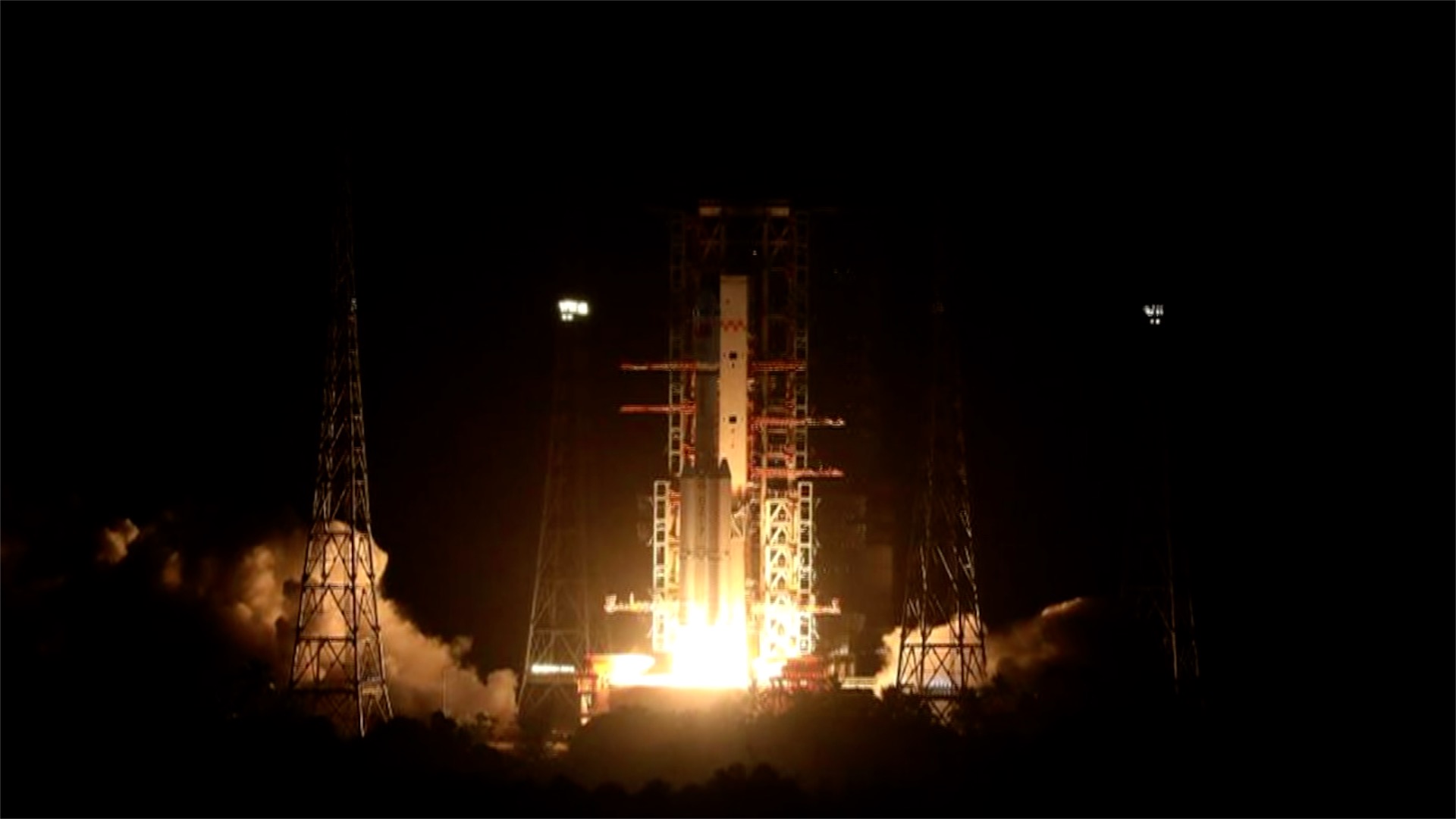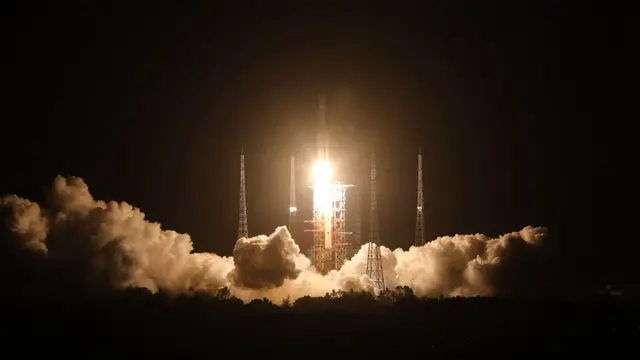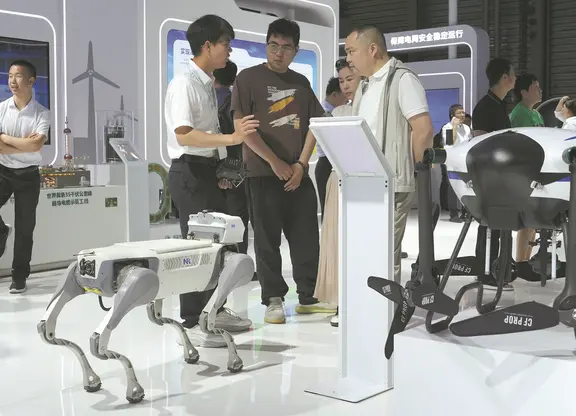01:26

China successfully launched the cargo spacecraft Tianzhou-2 on Saturday, which is scheduled to dock with the space station core module Tianhe to deliver supplies, equipment and propellant, according to the ChinaMannedSpace EngineeringOffice.
A Long March-7 Y3 rocket carrying Tianzhou-2 blasted off at 8:55 p.m. Beijing Time from the Wenchang Spacecraft Launch Site in south China's Hainan Province, said the China Manned Space Agency (CMSA).
After 604 seconds, Tianzhou-2 separated from the rocket and entered its designated orbit. At 9:17 p.m., the solar panels of Tianzhou-2 unfolded and began working properly.
"The launch was a complete success," the CMSA said.
The launch of the Tianzhou-2 cargo vessel is one of the 11 missions planned by China to complete the construction of its space station by the end of 2022. The 11 missions are comprised of the three launches of the core module and two lab capsules of the space station, four cargo vessel flights and four manned missions.
The country sent the Tianhe core module into the planned orbit on April 29, kicking start the series of launch missions over the next two years.
The launch of Tianzhou-2 was the first time that the space station cargo transportation system, composed of the Tianzhou spacecraft and Long March-7 rockets, was put into use.
Measuring 10.6 meters in length and with a maximum diameter of 3.35 meters, the Tianzhou-2 cargo ship has a maximum takeoff weight of 13.5 tonnes and carries 6.8 tonnes of goods and materials.
More than 160 large and small packages, including supplies for astronauts and space-science equipment, and two tonnes of propellant have been loaded into the cargo freighter, according to the China Academy of Space Technology (CAST).
Lei Jianyu, a designer of Tianzhou-2 at the CAST, said that only two types of cargo spaceships currently in service globally have a maximum carrying capacity of more than 5 tonnes. "China's Tianzhou is one of them, and is at the world-leading level."
After docking with Tianhe, Tianzhou-2 will replenish Tianhe's propellant and help test equipment for space application projects.
The Tianzhou-2 cargo freighter is composed of cargo and propulsion compartments. Supplies are loaded inside the pressurized cargo section, and propellant in the propulsion section.
The propellant used for the Tianzhou-2's flight and the propellant for refueling the Tianhe core module can be flexibly distributed according to demand.
During the construction of the space station, cargo spaceships will always be launched ahead of crewed missions. "We will transport support materials, necessary spare parts and equipment first, and then our crew," said CMSA Director Hao Chun.
Yang Hong, chief designer of the space station at the CAST, said the launch missions of China's space station are closely coupled. Within 48 hours after Tianhe entered orbit, the core module underwent a status evaluation, and Tianzhou-2 then began its launch countdown preparations.
Following Tianzhou-2's docking with Tianhe, the Shenzhou-12 crewed spaceship will enter its countdown preparations for launch.
Three astronauts aboard Shenzhou-12, who will stay in orbit for three months, will unpack the goods stowed inside Tianzhou-2 to obtain their living and working materials.
In addition to supplies for three astronauts, the gear delivered by Tianzhou-2 also includes two spacesuits for extra-vehicular activities, each weighing more than 100 kilograms.
Tianzhou-2 is also delivering space food, dubbed "space deliveries" by Chinese engineers, including many traditional Chinese dishes.
From staple foods to non-staples, from meat to vegetables, the menu design is of high quality and appetizing for astronauts. Famous stir-fried Chinese dishes like shredded pork with garlic sauce and Kung Pao chicken are both on the menu.
The cargo craft will operate in orbit for one year. Its power supply capacity is not less than 2,700 watts. It can also carry out multiple in-orbit refueling missions.
"China plans to build the space station into a state-level space lab supporting long astronaut stays and large-scale scientific, technological and application experiments," said Zhou Jianping, chief designer of China's manned space program.
(With input from Xinhua)
 简体中文
简体中文





